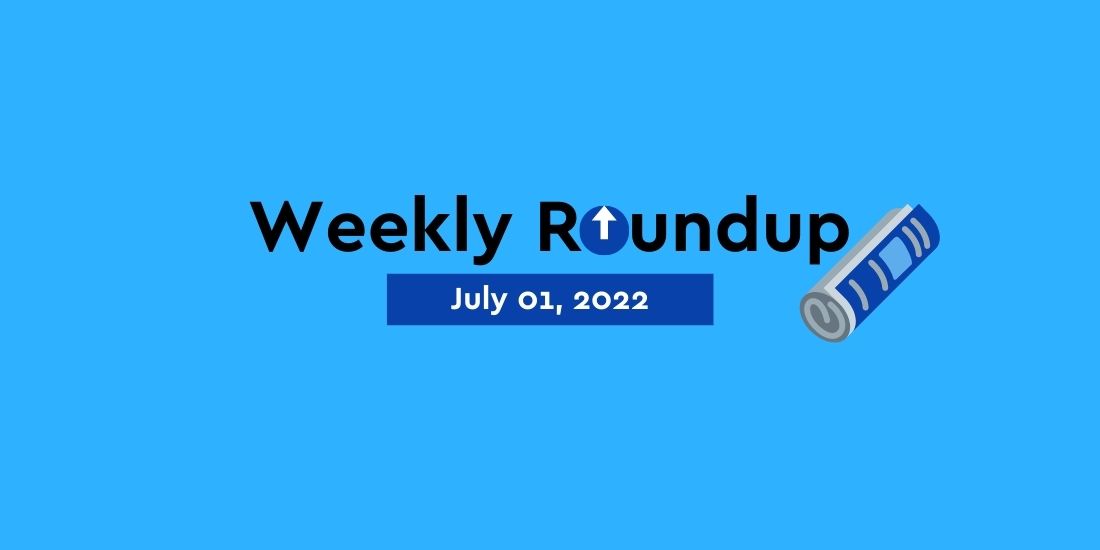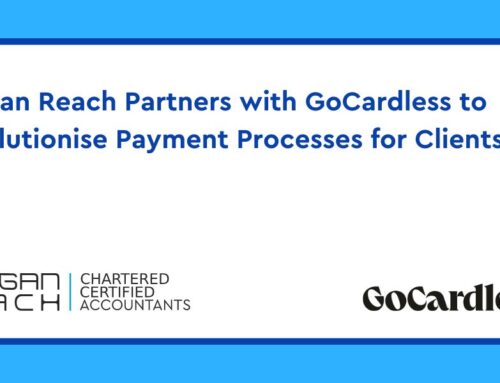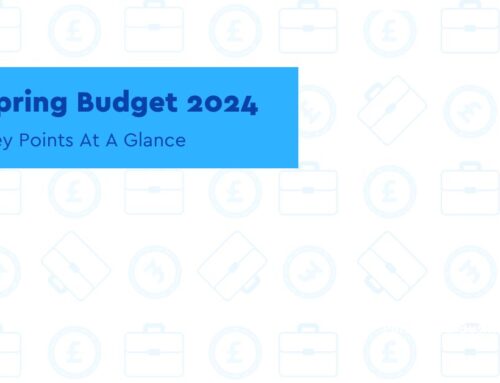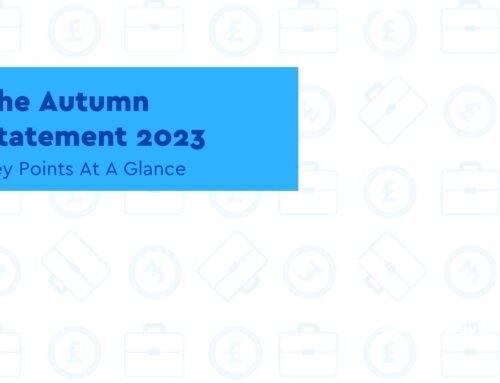News – P11D Form
Your guide to the P11D form – deadline and what to include
Key Points
- Being self-employed you’re essentially both an employer and employee
- Therefore, you should use the P11D form to report any benefits to HMRC
A P11D form is where employers and directors of companies have to declare benefits in kind to HMRC.
Whether you employ people in your business, or you’ve received benefits in kind as a director, you’ll need to declare these benefits every year.
Being self-employed you’re essentially both an employer and employee, so you should use the P11D form to report any benefits to HMRC as part of your annual Self Assessment.
What is a P11D form? A P11 guide for small businesses
If you’re not sure what goes on a P11D form, what ‘benefit in kind’ means, or when the filing deadline is, this article explains everything you need to know as a small business owner.
There are two forms you need to know about:
- P11D form – this is where you declare benefits in kind and you’ll submit one for each employee or director[Text Wrapping Break]
- P11D(b) form – here you’ll summarise all the P11Ds you’ve submitted to show the total benefits in kind given by the business, and any Class 1A National Insurance contributions you’re due to pay for the year[Text Wrapping Break]
Who needs to complete a P11D form?
Employers need to file a P11D form for any employees in receipt of benefits in kind. You should also complete this form for company directors or if you’re registered as self-employed.
You must use a separate P11D for each director or relevant employee.
If there aren’t any taxable benefits in kind to declare then you don’t need to complete a form.
Benefits in kind – what is a P11D benefit?
Benefits in kind are non-cash benefits, or perks, provided to a director or employee that aren’t included in their salary or wages.
These are taxable benefits so need to be reported to HMRC, and you may need to pay National Insurance contributions on these benefits.
P11D benefits include things like:
- mileage payments[Text Wrapping Break]
- car benefit or car fuel benefit[Text Wrapping Break]
- vans available for private use[Text Wrapping Break]
- health insurance[Text Wrapping Break]
- interest-free loans, e.g. season ticket loans[Text Wrapping Break]
- relocation expenses[Text Wrapping Break]
- living accommodation[Text Wrapping Break]
P11D exemption – what doesn’t need to be included?
You don’t need to include any allowable business expenses on your P11D. This includes things like:
- office supplies[Text Wrapping Break]
- business travel expenses[Text Wrapping Break]
- stock and materials[Text Wrapping Break]
When is the P11D deadline 2022?
You have a legal obligation to report any expenses and benefits to HMRC at the end of the tax year. Your P11D must be filed by 6 July for the previous tax year, and any taxes must be paid by 22 July.
The P11D deadline for the 2021-22 tax year is 6 July 2022 and the payment deadline is 22 July 2022.
P11D penalties
It’s important to file all tax returns accurately and on time – and this includes your P11D form.
The P11D late filing penalties kick in if you miss the deadline by two weeks. After this you’ll be fined £100 each month (or part month) your form is late, for every 50 employees.
There’s also a penalty for making an incorrect return, or for deliberately submitting incorrect information. This penalty is a maximum of £3,000 for each form.
You could also receive a penalty for late payment. Read more about HMRC penalty appeals process, plus the new points-based penalty system which is gradually being introduced depending on your tax obligation.
Reporting your end of year benefits – how to submit your P11D
You can report benefits in kind to HMRC in two ways:
- file P11D online using the PAYE online service[Text Wrapping Break]
- report using payroll software – be sure to find payroll software that’s recognised by HMRC[Text Wrapping Break]
The government retired the interactive PDF for 2021-22 submissions (known as HMRC’s online end of year expenses and benefits service), but it’s still possible to file a PDF by post if you can’t use the online methods mentioned above.
Check the government’s website for more guidance on completing the P11D forms.
You don’t need to submit a P11D form if you’re payrolling benefits. You just need to register the benefits with HMRC online so they know that tax is being collected through payroll. Gov.uk has more information on payrolling benefits.
Keep accurate records
It’s important to be on top of your finances and keep accurate records for tax reasons.
When it comes to your P11D, you’ll need to keep copies of benefits-related records for three years from the end of the tax year they’re for. For more general guidance, read our article on how long to keep business records.
Your records should include the date and details of every benefit, and how you worked out the amounts (for example, receipts), and any payment you (or your employee) contributes.
The article was derived from Simply Business: https://www.simplybusiness.co.uk/knowledge/articles/2022/06/a-guide-to-the-p11d-form/
News – SAYE
HMRC to review SAYE scheme bonus rate mechanism
Key Points
- SAYE allows you to buy shares with your savings for a fixed price
- Three and five-year SAYE contracts include a bonus or payment of interest
HMRC has announced that it intends to review the mechanism for calculating the bonus or interest rate applied to save as you earn (SAYE) scheme contracts.
The review will consider options to simplify the mechanism, although HMRC’s guidance does not explain what these options might include. Until the review is complete, the bonus rate will remain at 0%.
HMRC discussed the plan to review the mechanism at its share schemes forum meeting on June 7, 2022 (minutes from which are expected to be posted online in due course) and intends to ‘discuss the mechanism with stakeholders to inform any decisions made’.
HMRC aims to provide a further update before the end of summer 2022.
Three and five-year SAYE contracts include a bonus or payment of interest which (in principle) pays out at the end of the contract. The bonus or interest rate is expressed as a multiple of the monthly amount saved into the scheme. Since 2011, however, the bonus rate for all three-year and most five-year contracts has been nil, reflecting the very low prevailing interest rates over the period.
Save As You Earn (SAYE)
This is a savings-related share scheme where you can buy shares with your savings for a fixed price.
You can save up to £500 a month under the scheme. At the end of your savings contract (3 or 5 years) you can use the savings to buy shares.
The tax advantages are:
- the interest and any bonus at the end of the scheme is tax-free
- you do not pay Income Tax or National Insurance on the difference between what you pay for the shares and what they’re worth
You might have to pay Capital Gains Tax if you sell the shares.
You’ll not pay Capital Gains Tax if you transfer the shares:
- to an Individual Savings Account (ISA) within 90 days of the scheme ending
- to a pension, directly from the scheme when it ends
If you do not transfer your shares to a pension immediately when the scheme ends, you can still transfer them up to 90 days later. You may have to pay Capital Gains Tax if they go up in value between when you buy them and when you transfer them.
News – Saving
Industry ‘making progress’ in helping savers with retirement options
Key Points
- Wider consensus across the industry is that no single product can provide for all of someone’s needs
- Individuals have been faced with a series of very important and complex decisions to take at retirement
Progress has been made by the pensions industry to help savers make informed decisions about what to do when they retire, according to a report from the Pensions and Lifetime Savings Association (PLSA).
In the wake of the Department for Work and Pensions (DWP) issuing its call for evidence on helping savers understanding their pension choices, the Retirement Choices: The Evolution of Products and Support report found there is a lot of work being undertaken by the industry in this area.
However, the report noted a framework that outlines the real-life choices savers need to make may help them make better, more informed decisions on what action to take with their pension pots.
Additionally, the report noted that since the pensions freedoms came in during 2015, individuals have been faced with a series of very important and complex decisions to take at retirement with regard to how they spend their life savings.
With most savers no longer buying a guaranteed income, the risks of running out of money – either due to an unsustainable withdrawal rate or through cash investments losing money in real terms – have grown, so people need help to understand the choices they need to make.
The report also found that pension schemes and providers have the knowledge that retirees need to get good outcomes, so the PLSA is encouraged that this expertise is being harnessed with increasing numbers of master trusts and insurers building models that seek to guide their members through their retirement income options.
The range of those options is growing too, the report found, with wide consensus across the industry that no single product can provide for all of someone’s needs over what could be a 30-year retirement, so increasing focus is being placed on how to help people overcome this hurdle.
Previously, the PLSA called for a new set of product, communication and governance standards, underpinned by legislation, to pave way for pension providers to give greater support to savers at retirement.
PLSA director of policy & advocacy, Nigel Peaple, commented: “Throughout 2022 we’ve been speaking to pension schemes and providers across the industry to find out what support savers have on offer, and we’ve published this market evolution report to inform the DWP’s timely call for evidence.
“The market has without doubt moved on in recent years – among the master trusts in particular – but the hard work will be in ensuring the support people need for a safer and more valuable retirement is available for all, irrespective of what kind of pension they have.
“The PLSA’s view is that guidance is best provided by schemes themselves, and that most people need access to a range of retirement products which cater for their changing needs.
“We discuss our Guided Retirement Income Choices proposal within our report, and hope ideas such as this will complement the DWP’s policy work.
“Following the publication of this report, we will continue to engage with government, providing the full insight afforded by our membership, as they shape the environment for future pensioners.”
The article was derived from Pensions Age: https://www.pensionsage.com/pa/Industry-making-progress-in-helping-savers-with-retirement-options.php
News – Economy
We could raise interest rates faster, says Bank of England governor Andrew Bailey
Key Points
- The Bank has raised interest rates at its past five meetings by 25 basis points
- UK consumer prices inflation is 9.1 per cent, the highest since 1982
The Bank of England is leaving “all options on the table” including a bigger 50 basis-point interest rate rise to tackle 40-year high inflation, central bank governor Andrew Bailey has warned.
Bailey told an audience of global central bankers that rate-setters would leave the door open to more aggressive monetary tightening, despite the gradual pace of rate rises so far this year.
“[It] leaves options on the table and that is very deliberate,” Bailey told an audience at the European Central Bank’s annual forum in Sintra, Portugal. “I want people to take the message, as we respond to the [inflation] shock, that we want to have options on the table. There will be circumstances where we have to do more,” Bailey said.
The Bank has raised interest rates at its past five meetings by 25 basis points, taking the UK’s base rate to 1.25 per cent, the highest since 2009. But an upsurge in inflation, despite monetary tightening this year, has raised the prospect of more aggressive 50 basis-point rises to contain price pressures.
Bailey said he had not yet decided whether to vote for a 50 point rise, after three of the nine strong monetary policy committee (MPC) supported bigger increases in the two most recent rate-setting meetings. The Bank makes its next rate decision in early August.
UK consumer prices inflation is 9.1 per cent, the highest since 1982, and is expected to peak above 11 per cent this year, making Britain the worst-hit developed world economy. Bailey said double-digit inflation was largely the result of the UK’s energy price market. Households have faced huge rises with much higher bills coming in October.
He said that if inflation is more persistent, “then we will act more forcefully and we will have to.”
The pound has lost more than 10 per cent against the dollar this year, adding to inflationary pressures by raising the price of imported goods. Bailey said he was “not surprised” as “the UK economy is weakening more than others”.
The world’s central banks have making a radical reversal after more than a decade of ultra-low interest rates and monetary stimulus to tackle inflation.
Christine Lagarde, president of the ECB said: “I don’t think we will go back to the world of low inflation.”
Policymakers have come under fire for failing to foresee how far inflation would rise after Covid-19 lockdown measures were lifted. “We now understand better how little we understand about inflation,” Jay Powell, chairman of the US Federal Reserve, admitted.
The article was derived from BM Magazine
Latest Snippets
Tax gap remains steady at 5.1%
Statistics published by HMRC show the estimated tax gap for the year 2020/21 is 5.1%, unchanged from the previous year and the second-lowest recorded.
The annual report estimates any discrepancy between the total amount of tax owed and the total paid by the public throughout the financial year.
In monetary terms, the tax gap for 2020/21 is £32 billion – a decrease on the 2019/20 tax year, when the tax gap stood at £34bn.
But at 5.1%, there has been no change in the gap as a percentage of total theoretical tax liabilities when compared to the previous year.
The total tax due to be paid also fell from £672bn in 2019/20 to £635bn in 2020/21 due to the COVID-19 pandemic.
Further findings in the 2020/21 tax publication included:
- The tax gap for income tax, National Insurance and capital gains tax is 3.5%, representing 39.5% of the total tax gap by type of tax
- The VAT gap shows a downward trend from 14.1% in 2005/06 to 7% in 2020/21
- The corporation tax gap reduced from 11.5% in 2005/06 to 9.2% in 2020/21
HMRC raises interest rates on late tax bills from July
Following the increase in the Bank of England base rate to 1.25% earlier this week, HMRC has confirmed that it will raise interest rates on late tax bills by a further 0.25%.
This means that the late payment interest rate will increase to 3.75% from July 5, 2022. The rate last increased to 3.5% on 24 May. This is the highest rate since the height of the financial crisis in January 2009.
Late payment interest is payable on late tax bills covering income tax, National Insurance contributions, capital gain tax, stamp duty land tax, stamp duty and stamp duty reserve tax. The corporation tax pay and file rate also increases to 3.75%.
Corporation tax self assessment interest rates relating to interest charged on underpaid quarterly instalment payments rises to 3.75% from July 5, 2022, up from 3.5%.
The interest paid on overpaid quarterly instalment payments and on early payments of corporation tax not due by instalments rises to 2.25% from 27 June 2022, up from 2%.
The repayment interest rate remains unchanged at 0.5%, and has remained fixed at that rate since September 29, 2009.
Get In Touch
At Morgan Reach, we understand every business needs a little help now and again-especially when it comes to the financial side of things. Therefore, to help our clients and visitors we endeavour to cover as much of the business news as possible. If you are self-employed or run a business and need assistance and advice on how these news could make a difference to you or your business, feel free to get in touch with the experts at Morgan Reach. Our business growth experts at Morgan Reach will guide you through what support is available for you or your business as well as the latest news that may affect you.







